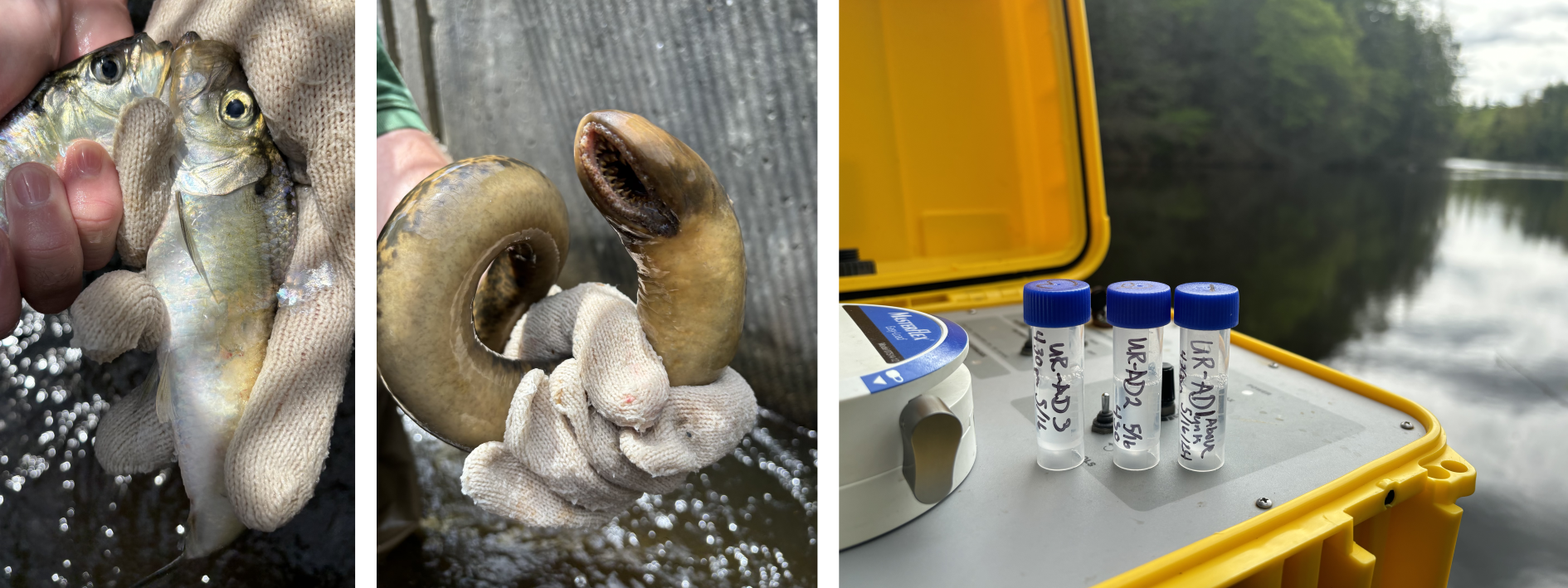Environmental Genomics and Bioinformatics
My research is centered on understanding the connections between humans and biota; most often using molecular tools for monitoring (environmental DNA, or eDNA) on fish in estuaries. I often collaborate with groups that wish to bring these tools to bare to monitor fish and other taxa to determine how they respond to restoration efforts- such as anadromous fish and dam removals.
Other avenues of research include:
- Pico-sized cyanobacteria blooms in NH lakes
- How terrestrial mammals respond to forest managemet practices through eDNA trapped in spider webs.
- Potential of eDNA for inferring population genetic parameters
- Environmetnal contaminants and evolution
In collaboration with NH Fish & Game, we are investigating the impact of dams and their removal on two rivers in the Great Bay Watershed. We are sampling around the Oyster River / Mill Pond dam (slated to be removed in the summer of 2025) and the Pickpocket dam (under consideration of removal) on the Squamscott / Exeter River. We are going to characterize the fish communities through the summer of 2024 herring run and the pre/post Mill Pond dam removal.

Other collaborations around eDNA:
- Monitoring very different, dynamic estuaries across the the NERRs system with PI Alison Watts
- Tracking the movement and diet of cod with PI Nathan Furey, Aliya Caldwell and Sidney Axtell
Turning our attention to the tiny: Picocyanobacteria in NH Lakes
Seasonal harmful cyanobacteria blooms (HCBs) are characterized by the rapid proliferation of multiple cyanobacteria species that produce biotoxins hazardous to human health and wildlife. Among these, certain larger, bloom-forming cyanobacteria species can create visible blooms that often lead to beach closures. However, the smallest class of cyanobacteria, picocyanobacteria (less than 2 micrometers), remains poorly understood, particularly in terms of their contribution to HCBs. Due to their minute size, picocyanobacteria are notoriously challenging to study using traditional methods, making it difficult to identify which species are present in water samples and which are capable of producing harmful cyanotoxins. By sequencing bacterial DNA from water samples, we can begin to unravel the complex relationships between toxins, cyanobacteria, and the environmental factors that drive harmful blooms. Unfortunately, the resources needed to match DNA sequences to toxin-producing picocyanobacteria are currently sparse and underdeveloped.
In collaboration with Amanda McQuaid and the Lay Lakes Monitoring Program, Peter Countway and Robin Seith at Bigelow Marine Lab, and the town of Wolfeboro, NH, we will target picocyanobacteria from New Hampshire lakes for whole-genome sequencing to 1) assemble more genomes (and toxin producing genes) for pico-sized cyanobacteria, 2) measure the prevalence of toxins of pico-populations from different lakes in New Hampshire.
